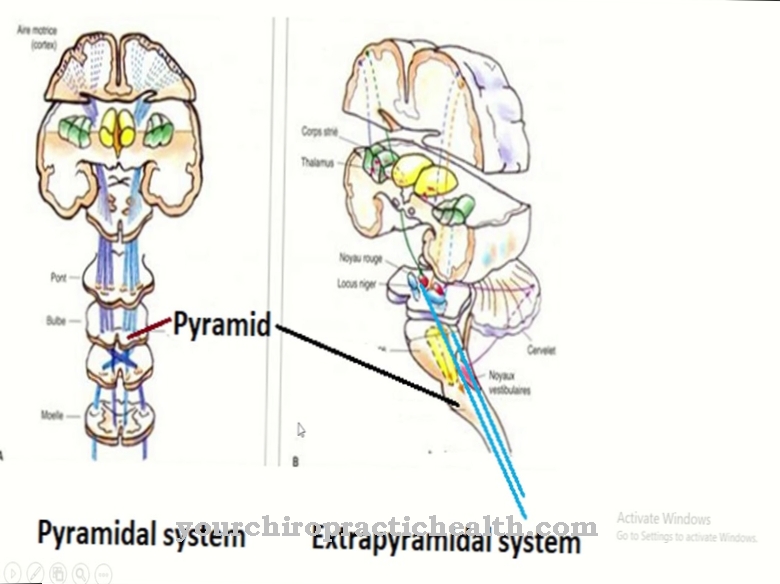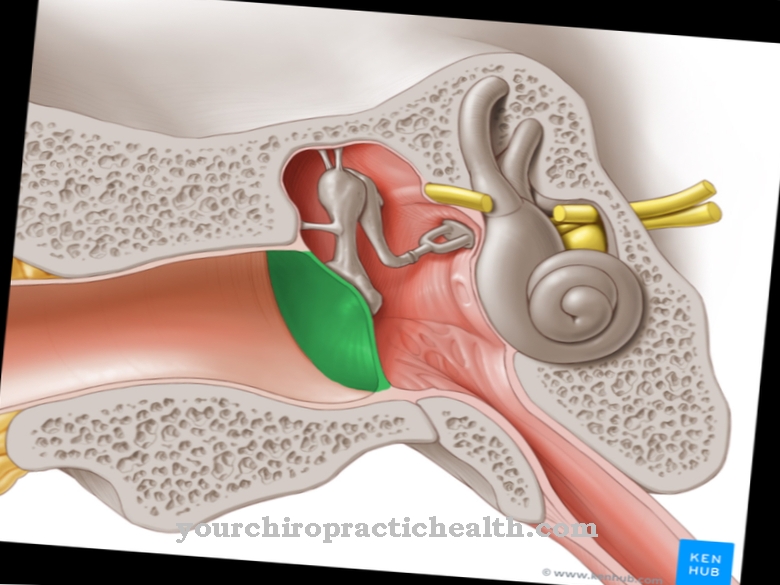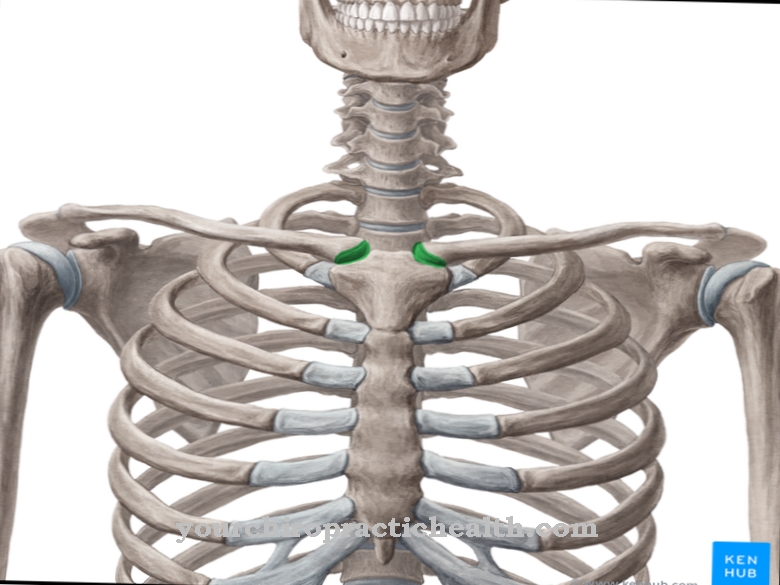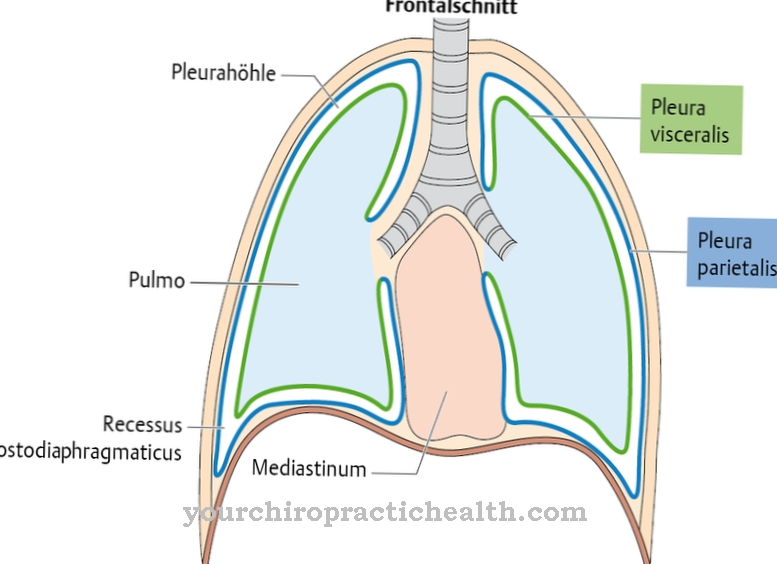As Kidney corpuscles is called the structural unit of the kidney. This histological unit consists of a capillary tangle of vessels and a so-called Bowman capsule that surrounds the kidney corpuscle.
What is a kidney corpuscle?
Together with the kidney tube, the tubulus renalis, the kidney corpuscle forms one of the smallest functional units of the nephron, the kidney. Each kidney has around 1.4 to 1.5 million such kidney corpuscles, which are distinguished by a vascular pole and a urinary pole.
The kidney corpuscles act like filters, because a quarter of the blood always goes through the kidneys. When the urine is guided into the renal pelvis, the urine is already referred to as secondary urine and is only one percent of the primary urine volume. The reabsorption of the fluid is controlled by the hormone ADH, adiuretin.
Anatomy & structure
The kidney corpuscle, also called the corpusculum renale, is part of the so-called nephron and forms primary urine as an ultrafiltrate of the blood. The kidney corpuscles are approximately 0.2 millimeters in size and have a spherical shape. They are located within the cortex of the kidney. The constituent parts of the kidney corpuscle are a capillary vascular cone that is encased in a double-walled capsule, the so-called Bowman's capsule.
This Bowman capsule bears an inverted capillary ball called a glomerulus. Together, these structures create a blood-urinary barrier. The blood components are pressed out of this glomerulus into a system of tubes, which at the end excretes the urine. The tube system begins at the Bowman capsule and ends at the nephron, the kidney. There the urine enters the renal pelvis, then the ureters and the bladder. The cortex labyrinth is several kilometers long in the two kidneys.
The almost tiny blood vessels in the kidney corpuscles have pores that are permeable to water. So it is possible through the pores to filter out the toxins in the body that have arisen in the metabolism. The pores allow toxins through, but not the important proteins, vitamins or larger blood cells. The limit for this permeability of the pores is a corresponding molecular weight of 5 to 10,000.
Function & tasks
One of the most important tasks of the kidney corpuscle is the ultrafiltration of the blood to a so-called primary urine. About a liter of blood passes through the kidneys every minute. 20 percent of it is filtered per minute. This amount of fluid of around 125 millimeters per minute, 180 liters per day, is decisive for the diagnosis. It reflects the functionality of the kidneys.
The blood pressure in the glomerular vessels, which is subject to daily fluctuations such as sleep, stress or physical confirmation, is decisive for the filtration process. The kidney is able to adjust the blood pressure to the current requirements. This process is called autoregulation of the kidney and takes place with the help of the pressure receptors in the blood vessels leading to and from the kidney corpuscle. If the blood pressure is too high, the supplying arteries widen; if the blood pressure is too low, the outgoing vessels of the glomerulus narrow. Since the kidney is a detoxification organ, but also regulates the salt, water and hormone balance, the tasks of the kidney corpuscles have a very important function. After filtration, the urine is processed further.
The kidney supports the formation of red blood cells and bone metabolism. It protects the human organism from possible overhydration, but also from dehydration and a regulated salt content in the body. The amount of water that is recovered is regulated by the hormones and the influences of our autonomic nervous system, but the function of the kidneys is also adjusted. With tubular secretion, foreign substances such as drugs, uric acid, ammonia, urea and other substances are excreted more quickly.
In particular, the drugs are excreted with the help of active transporters, known as carriers. Decomposition products continue to circulate in the blood. This can increase the effect of drugs or lead to an interaction with several drugs. With a constant excess of uric acid in the blood, it can build up in the joints, which can lead to gout.
Diseases
In certain diseases such as hypertension or diabetes mellitus, blood pressure is increased, but constant blood pressure is important for the filtration that takes place in the glomeruli. The autoregulation of the kidney ensures that blood pressure is as constant as possible without influencing the kidney's filtration processes. The pressure sensors react extremely sensitively and intervene to regulate fluctuations.
If protein is found in the urine, this can be a sign of possible kidney disease. The concentration of urine and the resulting recovery of salts and water requires a lot of energy. If renal insufficiency is possible, the important urine concentration no longer works completely, which requires increased urine production and often multiple emptying of the bladder, sometimes at night. If the proportion of the hormone ADH, adiuretin, is too low, diabetes insipidus can occur, which results in the excretion of up to 20 liters of fluid daily.
Only a certain amount of amino acids and glucose can be returned. When there is a lack of insulin, there is too much glucose in the blood, which is then excreted in the urine. Glomerulonephritis is inflammation of the kidney corpuscles in which the kidney tissue is inflamed. The cause is probably that constant contact between the blood vessels in the kidney corpuscles and the pollutants in the blood causes an inflammatory reaction or that genetic factors are also responsible.




.jpg)























.jpg)